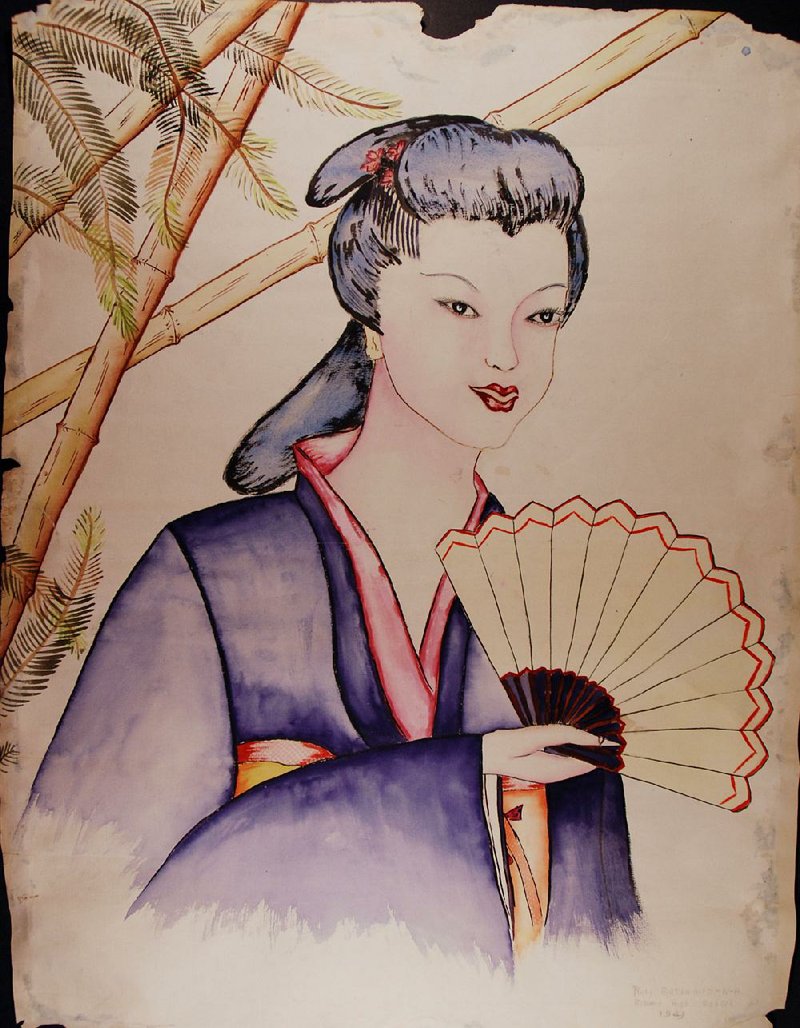Two exhibitions at the Butler Center for Arkansas Studies in Little Rock put human faces on the forced internment of people of Japanese ancestry in the state during World War II and the men and women imprisoned in the 1970s at Cummins Prison Farm.
Both exhibits are drawn from dark passages in Arkansas' history.
Exhibits
“The American Dream Deferred: Japanese American Incarceration in WWII Arkansas”
through June 24
“Bruce Jackson: Cummins Prison Farm”
through May 27
Butler Center for Arkansas Studies, 401 President Clinton Ave., Little Rock
Hours: 9 a.m.-6 p.m. Monday-Saturday
Info: www.butlercenter.org; (501) 918-3033.
"The American Dream Deferred: Japanese American Incarceration in WWII Arkansas" is also timely, with immigration issues much in the news. It is the first of four exhibitions scheduled for the coming two years and focused on the internment of people of Japanese ancestry at camps in Jerome and Rowher.
After Japan attacked Pearl Harbor in 1941, many feared those of Japanese ancestry would aid the enemy. That fear led to President Franklin Roosevelt signing Executive Order 9066 on Feb. 19, 1942, which ordered that those people be removed, mostly from areas along the West Coast, and sent to one of 10 internment camps.
"They lost homes, farms, businesses ... something like $2 billion worth" says Kim Sanders, exhibit curator.
Mabel Rose Jamison Vogel, art teacher at Rohwer, saved hundreds of drawings, paintings and photos.
Rosalie Santine Gould, former mayor of McGehee, inherited the collection when Vogel died. Gould donated it to the Butler Center in 2011. Considered the largest art collection from a single internment camp, the artifacts and artwork in the exhibit are drawn from what is now called the Rosalie Santine Gould-Mabel Jamison Vogel collection.
Sanders says the research and preparation of the exhibit were very difficult at times.
"There were days I had to back off from working on this," she says. "It was especially hard when I encountered the 'Yellow Peril' propaganda of that time. It is so reminiscent of what we see and hear today."
A mural created at Rowher by Michi Tanaka, one of the internees, was the subject of Sanders' master's thesis.
"Michi tried to balance the two aspects of herself ... American and Japanese," Sanders says. "After Pearl Harbor, it was pointed out repeatedly to Michi 'You are not like us.' Michi saw herself as a typical American teenager with a lot of the same interests others her age had."
People had to prove their loyalty, Sanders says.
"And they did."
The proof hangs on the walls.
Several patriotic posters, including For Victory, Buy War Stamps and Keep 'Em Flying, supported the war effort. Men from Rohwer and Jerome enlisted in the Armed Forces. They were part of an all-Japanese, highly decorated fighting unit -- the 442nd Regimental Combat Team, part of the 100th Infantry Battalion.
The more than 17,000 people held in Arkansas were confined to crowded barracks, each family given a living space of 20-by-20 feet.
Those men, women and children have much to teach us, Sanders says. "There is a lot we can learn about perseverance. They made the best of a bad situation."
And that reality is reflected in the art, which can be enjoyed on a surface level, but the circumstances under which it was created often resulted in emotionally charged and sometimes hopeful work.
One display shows a chair and table made by one of the internees from scrap lumber left from the camp's construction. A black-and-white photograph shows one of the living spaces.
The majority of people in the camps at Rohwer and Jerome were second and third generation Japanese-Americans. Their hair and clothing reflected the styles of the 1940s. And that shows in some of the art, especially in a delightful scene of young adults dancing, titled Dance, a gouache on paper by Nobi Tanimoto.
People painted portraits (including a well-executed pastel by Wilma Matsubara and a pastel portrait of Vogel), fashion designs and still lifes (a stunning watercolor, Still life with flowers) to bring beauty to their sparse quarters.
Some of the art reflects Japanese culture and aesthetics. Ruby Matsuhiro's lovely watercolor Woman Holding a Fan is evocative of her heritage. Some adapted the art of kobu to cypress tree roots and knots -- removing the bark and hand-rubbing them with wax. Whether in natural forms or painted carvings, the pieces are stunning in color, grain and beauty.
The best aspect of this exhibition is how Sanders has allowed the objects to tell the story of people placed in difficult circumstances against their will, making the best life they could.
"The American Dream Deferred" is a haunting reminder of the strength of the human spirit. It also stands as a warning.
"This is what happens when people act out of fear," Sanders says. "It is up to us to make sure it doesn't happen again."
CUMMINS PHOTOS
As the state of Arkansas prepares to execute eight men over a 10-day period, an exhibit of photographs, "Bruce Jackson: Cummins Prison Farm," is showing at the Butler Center.
Drawn from the 102 images Jackson donated to the center, the photographs were taken during eight visits to the prison between 1971 and 1975. The state's prison system has a troubled history of abuse and torture that led to the system being declared unconstitutional on Feb. 18, 1970, by U.S. District Judge J. Smith Henley.
"I wanted to see what the worst prison in America looked like," Jackson said in a 2009 interview with the Arkansas Democrat-Gazette.
The most moving moments in the current exhibition manifest in a display of enlarged prisoner mugshots that Jackson acquired. He created a book of these vintage images, Pictures From a Drawer: Prison and the Art of Portraiture (Temple, 2009).
Email:
ewidner@arkansasonline.com
Style on 04/09/2017
